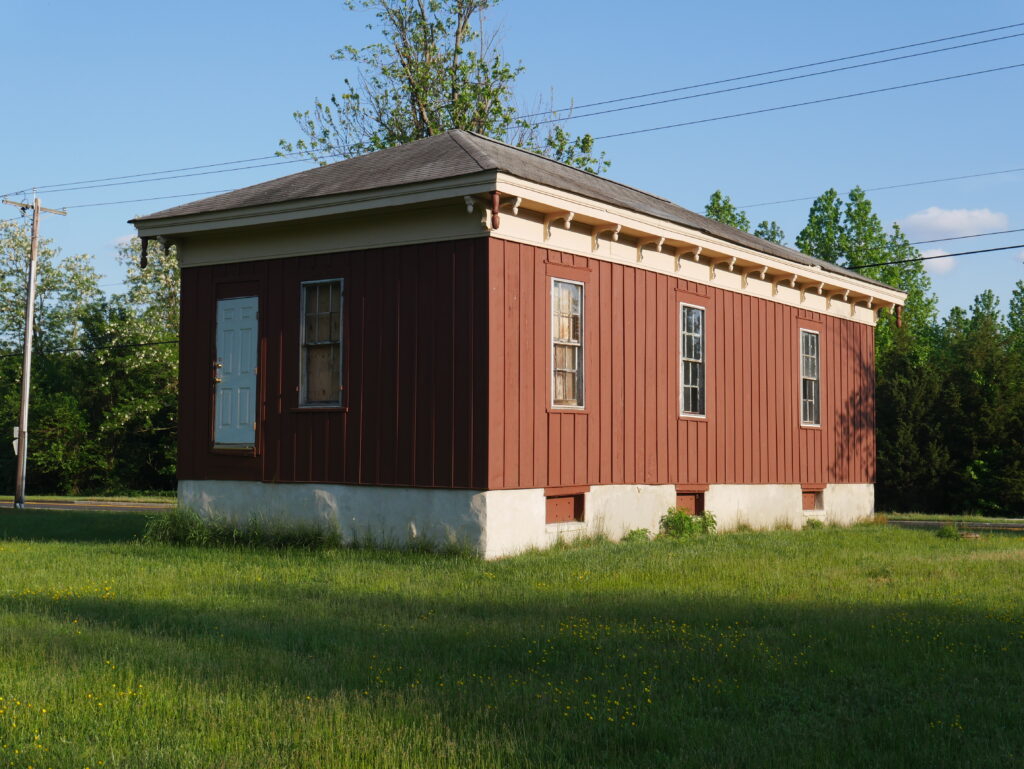NJ Black Heritage Trail: Sites in South Jersey That Create Recognition for Black History

The Dr. James Still Historic Office has stood since 1830, in Medford. Photo by Erika Heinrich.
BY ERIKA HEINRICH | South Jersey Information Equity Project
HADDONFIELD — The New Jersey Black Heritage Trail is gaining momentum, as the New Jersey Historical Commission has approved its first categorization of 32 historical landmarks to be a part of the Black Heritage Trail.
The bill was signed by Gov. Phil Murphy in 2022. The bill’s purpose is to call on the NJ Historical Commission to establish a “trail-like path … that highlights Black life.”
According to a Department of State press release on April 26, 32 sites were given a “unanimous approval” by the New Jersey Historical Commission across 15 counties. These historical sites represent Black resilience.

Dolly Marshall, a historic preservation activist, was responsible for the two sites in Camden, including the Kaighn Avenue Baptist Church in 1838 and the Rev. Alexander Heritage Newton tombstone in Mt. Peace Cemetery. She anticipates the further creation of the Black Heritage Trail to recognize the local history for all.
“As we honor the past, I hope these markers inspire curiosity and a reframing of our collective history leading up to the Semiquincentennial, or the 250th anniversary, of the birth of the United States in 2026,” Marshall said. The New Jersey Black Heritage Trail builds upon a virtual Black Heritage Trail that was launched in 2021 by the NJ Black Heritage Foundation. Murphy has allocated $1 million in taxpayer funds to place historical markers along the physical Black Heritage path.
The Dr. James Still Historical Office is located in Medford, New Jersey. It is a red, rectangular building surrounded by healthy greenery and small yellow flowers. The building that was once Still’s office space was built in 1855.
Still, known as the “Black Doctor of the Pines,” was a self-educated herbalist who resided in Burlington County where he had his herbalist practice. His brother, William Still, was a notable American abolitionist and one of the founders of the Underground Railroad.
Still healed many people throughout the Burlington County area, up until 1882 when he passed away.
As of now, James Still’s Office is permanently closed for tours. The area still contains an active trail named “Dr. James Still’s Nature Trail” with woodlands and meadow terrain, a butterfly garden and multiple trails. The NJ Historic Preservation Office is responsible for the preservation of these sites.
It would be a great addition to the New Jersey community to see Dr. James Still’s Office reopened so it can get proper recognition as a New Jersey Black Heritage Site.
A neighborhood in Haddonfield — formerly known as The Point — was home to a majority of Black residents dating back to the 1700s. The area is known for having an intersection between Ellis Street and Potter Street which has served as a historcal site for Black resiliency.

Adrienne Rhodes, the co-founder of the Preserving Black History Project, is very happy with the outcome of The Point being recognized on the trail.
“It was a very competitive process, to meet the standards and requirements,” Rhodes said. “But I am very happy we made it.”
The Preserving Black History in Haddonfield Project shared that location at 230 Douglas Avenue. It is formerly a school used in the segregation process, known as School No. 4. It currently functions as a home residence.
Not far from here is Mount Olivet Baptist Church, another landmark in The Point. The church came to fruition in 1891 with the effort of Mary A. Rodney who lived on Ellis Street in Haddonfield. It is one of the oldest African American churches in the area.
Mount Olivet Baptist Church is still active today. In the early 1900s, preservationists said that Black residents made up 10% of the population in Haddonfield. However, the current census data reads that numbers of Black residents have plummeted to only 1%.
The Black Haddonfield History Project shared on CBS that Black families were being pushed out of their homes due to the local government’s decision to place a Little League Baseball field in the area. For The Point to be remembered, supporters said they will bring awareness to the maleficent, systematic occurrences that were unfair to the Black communities.
“This project is uniting people in a way that would’ve been unimaginable,” Rhodes said, sharing how all of this didn’t seem possible years ago.
The Historic African American Borough of Lawnside is another site recognized for its rich African American history, formerly known as Snow Hill or Free Haven. In 1926, Lawnside was granted municipality status.
Lawnside became the only African American incorporated municipality with a self-governing Black community in New Jersey. However, the lobbyists who pushed for this are still hidden in the murky depths history.
“There is so much history we still don’t know … Who negotiated it? Who made it happen? We owe them the debt because of their boldness to help,” Linda Shockley said, oping her research will reveal the identities of the people who pushed for Black leadership in the municipality.
The historic African American borough of Lawnside helped produce many Black leaders, including Peter Mott. This landmark is not specifically a part of the Black Heritage Trail, but it is still worth mentioning as a historical place rich with Black history and an impactful presence in New Jersey.
The oldest home in Lawnside is the Peter Mott House, built in 1832. Mott and his wife Elizabeth Mott used their home as a station for the Underground Railroad in Camden County. According to local legend, other local women would help in secret by providing extra food for the Motts to give to their railroad travelers. The Mott House is open for public tours every Saturday. Peter Mott was an abolitionist himself, and a leader in the community serving as a superintendent in their county Sunday schools.
The area was likely in contact with other Black leaders at this time. It remains important to see how history can connect the dots and it is fascinating to see how the Black Heritage Trail connects them.
The New Jersey Historical Commission estimated to reopen applications this time next year. The Black Heritage Trail is a journey across New Jersey. Along the way, it takes you to see small town communities and great local businesses. The spring greenery makes each site a calming atmosphere, with great history to learn about Black resiliency and success.
Follow Us Today On:
Note from AC JosepH Media: If you like this story and others posted on Front Runner New Jersey.com, lend us a hand so we can keep producing articles like these for New Jersey and the world to see. Click on SUPPORT FRNJ and make a contribution that will go directly in making more stories like this available. Thank you for reading!





